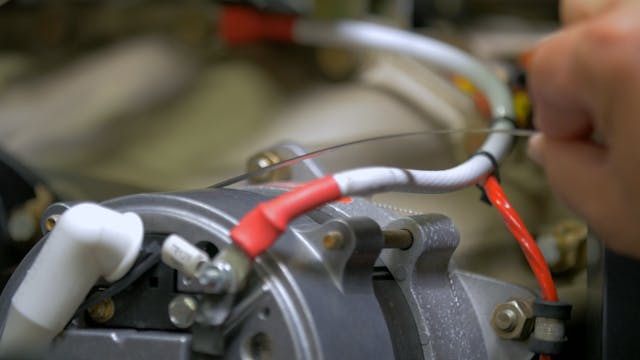Top Tips for Effective Electrical System Troubleshooting
Troubleshooting electrical systems requires a systematic approach, based in a comprehensive understanding of electrical concepts and security methods. By acquainting oneself with circuit elements, making use of essential devices, and adhering to an organized analysis approach, professionals can effectively determine and fix problems. However, the subtleties of efficient repairing expand beyond simple technological expertise; understanding how to document searchings for and prioritize security can significantly affect end results. As we explore these critical elements further, it comes to be clear that mastering this procedure is not just useful but important for success in the area.
Understand the Basics
Recognizing the essentials of electric systems is vital for efficient troubleshooting, as a solid foundation permits technicians to detect and resolve issues much more efficiently. A comprehensive grasp of electrical concepts, such as voltage, current, resistance, and power, is vital in identifying the source of troubles. Voltage is the electrical potential difference that drives present with a circuit, while resistance opposes the flow of current, impacting the total capability of the system.
Experience with circuit parts, consisting of resistors, capacitors, diodes, and switches, is additionally vital. Each component plays an unique role in circuit habits and can impact performance when malfunctioning. In addition, understanding collection and parallel circuit setups is vital, as these setups affect the circulation of voltage and present within the system.
Specialists need to be mindful of potential risks, such as shock and short circuits, to carry out secure troubleshooting techniques. By understanding these fundamental principles, technicians enhance their capability to carry out efficient diagnostics and repair services, inevitably leading to boosted performance and dependability of electric systems (electrical system troubleshooting).
Gather Necessary Equipment
Reliable troubleshooting of electric systems needs the ideal set of tools to identify and fix problems precisely. A well-appointed professional can significantly boost performance and performance in determining issues. Necessary devices include a multimeter, which measures voltage, current, and resistance, enabling precise evaluations of electric elements. Clamp meters are also beneficial for gauging existing without detaching the circuit, guaranteeing safety and ease.
Additionally, shielded hand tools such as screwdrivers, pliers, and cord pole dancers are essential for securely controling electric links. It is likewise suggested to have a circuit tester on hand to confirm the presence of voltage in electrical outlets and cables. For more complicated systems, a thermal imaging camera can aid discover overheating components, suggesting prospective failings.

Follow a Systematic Method
Having gathered the suitable tools, the next action in repairing electric systems is to follow a systematic method. A methodical technique guarantees that service technicians can recognize mistakes effectively and precisely, lessening downtime and protecting against unneeded fixings.
Begin by assessing the system's schematic layouts and requirements. This includes checking each part systematically, starting from the power resource and working towards the lots.
Use testing tools, such as multimeters and oscilloscopes, to gather objective information regarding voltage, present, and resistance at various factors within the system. This empirical evidence will certainly direct your troubleshooting initiatives and assist to confirm or remove prospective sources of YOURURL.com failing.
Additionally, consider ecological factors that might influence the system's performance, such as temperature level fluctuations or dampness ingress. A comprehensive assessment of wiring, links, and elements will certainly guarantee that all opportunities are accounted visit here for.
Record Your Findings
Extensive documents is necessary in the troubleshooting process of electric systems. Accurate records boost the efficiency of determining recurring problems and promote interaction amongst staff member. Each searching for needs to be carefully kept in mind, consisting of symptoms observed, examinations performed, and the outcomes of those tests. electrical system troubleshooting. This practice not only help in recognizing the root cause of the issue yet also works as a referral for future repairing efforts.

Furthermore, keeping a log of parts replaced or repair services done is invaluable. This information supports inventory administration and can help evaluate the longevity and dependability of particular elements.
Ultimately, the documents process must be thorough yet succinct, enabling very easy access and testimonial - electrical system troubleshooting. By prioritizing thorough documentation, professionals can develop a beneficial data base that not only help in current troubleshooting but also encourages future maintenance initiatives, consequently boosting total system dependability

Prioritize Safety And Security Actions
Recognizing the fundamental risks related to electrical systems is essential for making sure security during troubleshooting. Electrical shock, burns, and devices damage are simply visit this site right here a few of the potential threats that technicians deal with. Focusing on safety and security actions is not only a lawful commitment however additionally a moral imperative that safeguards both the technician and the surrounding setting.
Before commencing any type of troubleshooting task, service technicians need to wear suitable personal safety tools (PPE), consisting of protected handwear covers, security glasses, and flame-resistant clothing. Making sure that the workplace is dry and free of clutter can significantly reduce the risk of mishaps. It is vital to de-energize circuits before starting any work, validating that they are not live via the usage of a multimeter or voltage tester.
Establishing clear communication methods with team members is likewise crucial; this ensures that every person understands possible risks and the condition of the electric system being worked with. Last but not least, having an emergency feedback strategy in place can prove vital in the event of an incident. By prioritizing precaution, technicians can effectively minimize risks and promote a safer work environment.
Verdict
Efficient electric system troubleshooting depends on a comprehensive understanding of fundamental principles and a systematic strategy. By collecting vital tools, adhering to organized evaluation techniques, and thoroughly recording findings, the fixing process comes to be a lot more efficient and reputable. Focusing on safety and security procedures makes certain the well-being of people included and the integrity of the electrical system. Implementing these approaches will certainly enhance the repairing experience, leading to quicker resolutions and boosted operational performance in electric systems.